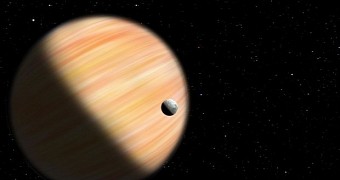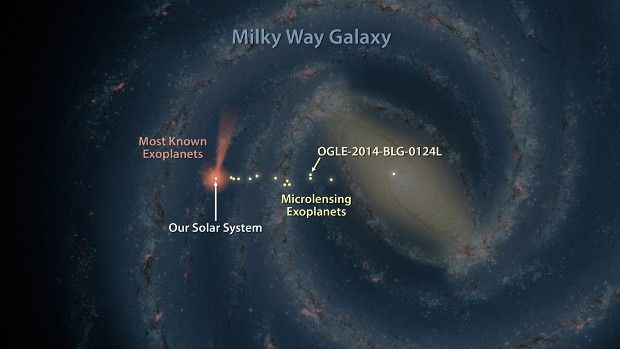This week, NASA scientists and fellow researchers at the Harvard-Smithsonian Center for Astrophysics announced the discovery of a previously undocumented planet that resides deep within our home galaxy, the Milky Way.
The newly discovered gas planet, i.e. OGLE-2014-BLG-0124L, sits at a distance of about 13,000 light-years from Earth, astronomers explain. This makes it one of the most distant planets thus far identified.
To get a better idea of the planet's location in the Milky Way, check out the map below. As easily noticeable, the celestial body dwells fairly close to the galaxy's core. Our Solar System, on the other hand, sits towards the edge.
Apart from its address and the fact that it appears to be a gas giant, scientists don't really know all that much about OGLE-2014-BLG-0124L. Then again, given the distance between this celestial body and our planet, its mere discovery is quite impressive.
The astronomers behind this investigation expect that the more distant planets they will identify in the years to come, the more they will know about the anatomy of the Milky Way.
“We don't know if planets are more common in our galaxy's central bulge or the disk of the galaxy, which is why these observations are so important,” said researcher Jennifer Yee at the Harvard-Smithsonian Center for Astrophysics.
How the planet was discovered
To identify OGLE-2014-BLG-0124L and determine its exact address in the Milky Way, astronomers used NASA's Spitzer Space Telescope and the Optical Gravitational Lensing Experiment's Warsaw Telescope at the Las Campanas Observatory in Chile.
The Warsaw Telescope and the Spitzer Space Telescope are designed to scan the skies and document blips in the view of distant stars. As explained by astronomers, such blips are more often than not caused by planets orbiting the star under investigation.
To get a good image of faraway stars, the telescopes employ a method known to scientists as microlensing. What this means is that they image stars with the help of other such fiery bodies that, when moving in front of their targets, magnify and brighten their light.
“A microlensing event occurs when one star happens to pass in front of another, and its gravity acts as a lens to magnify and brighten the more distant star's light,” scientists explain.
Microlensing makes it possible for astronomers to spot planets located at astounding distances from Earth. In fact, the most distant planet discovered using this method resides an impressive 25,000 light-years away, in the central bulge of the Milky Way.

 14 DAY TRIAL //
14 DAY TRIAL // 

